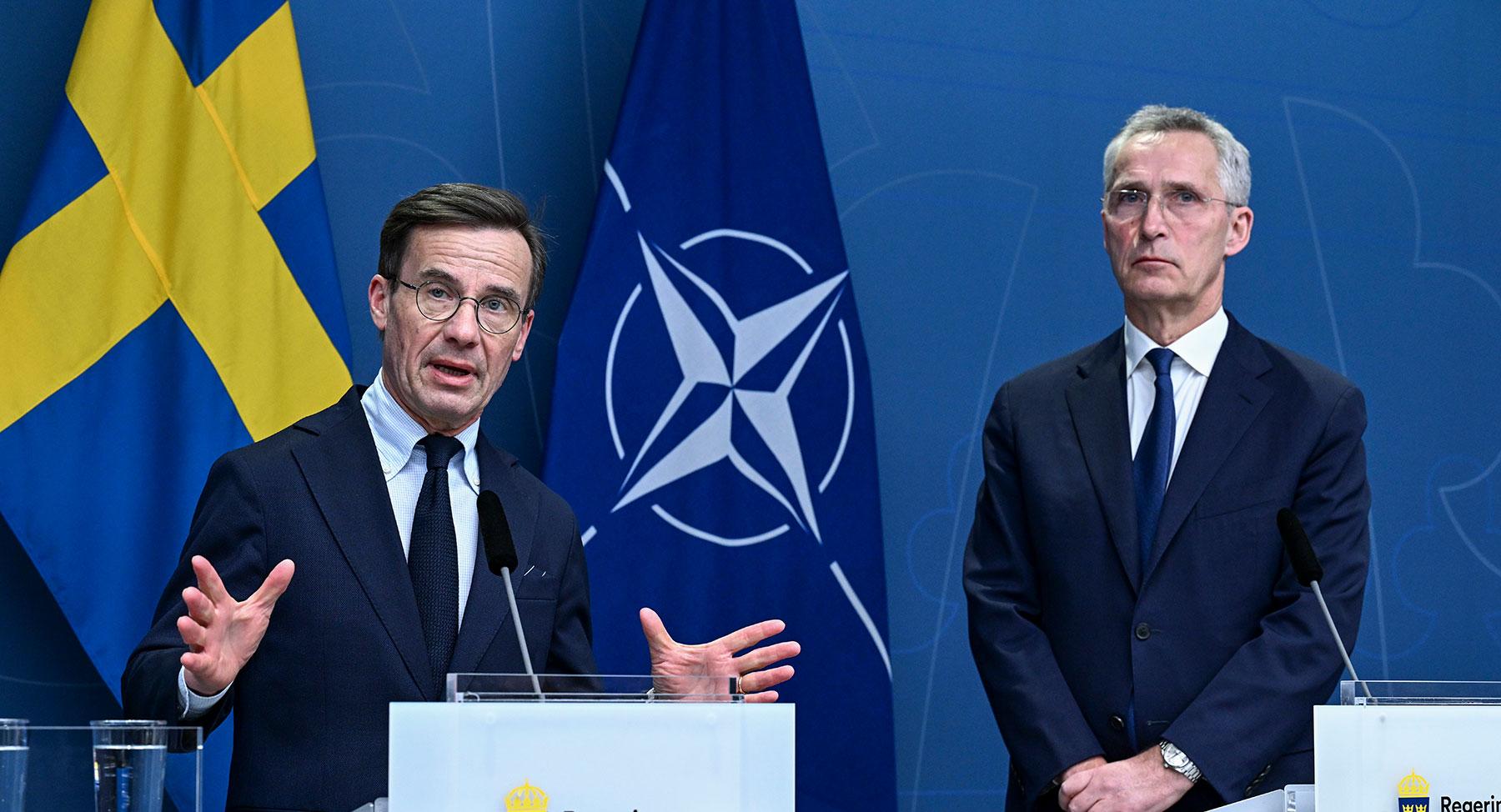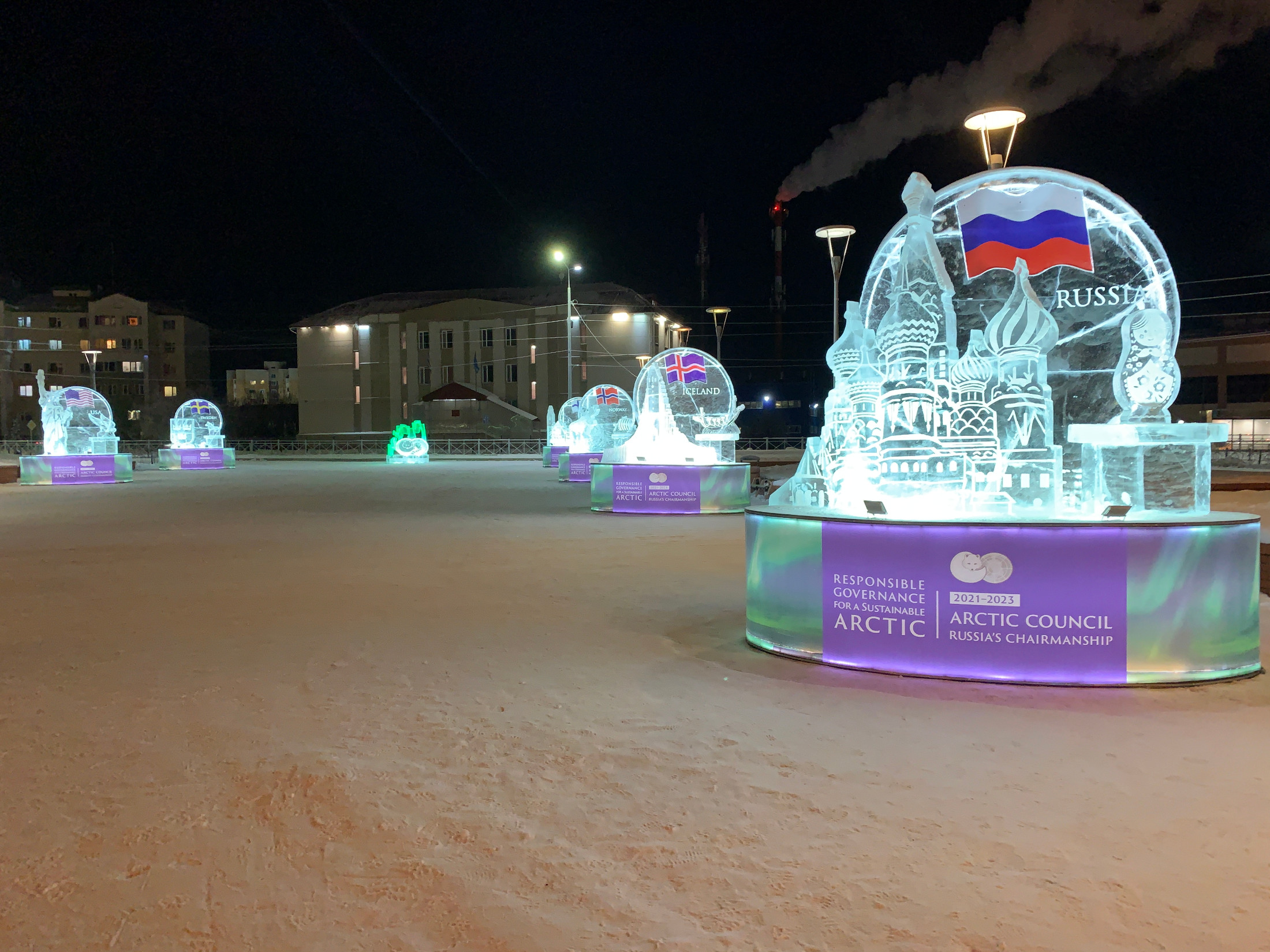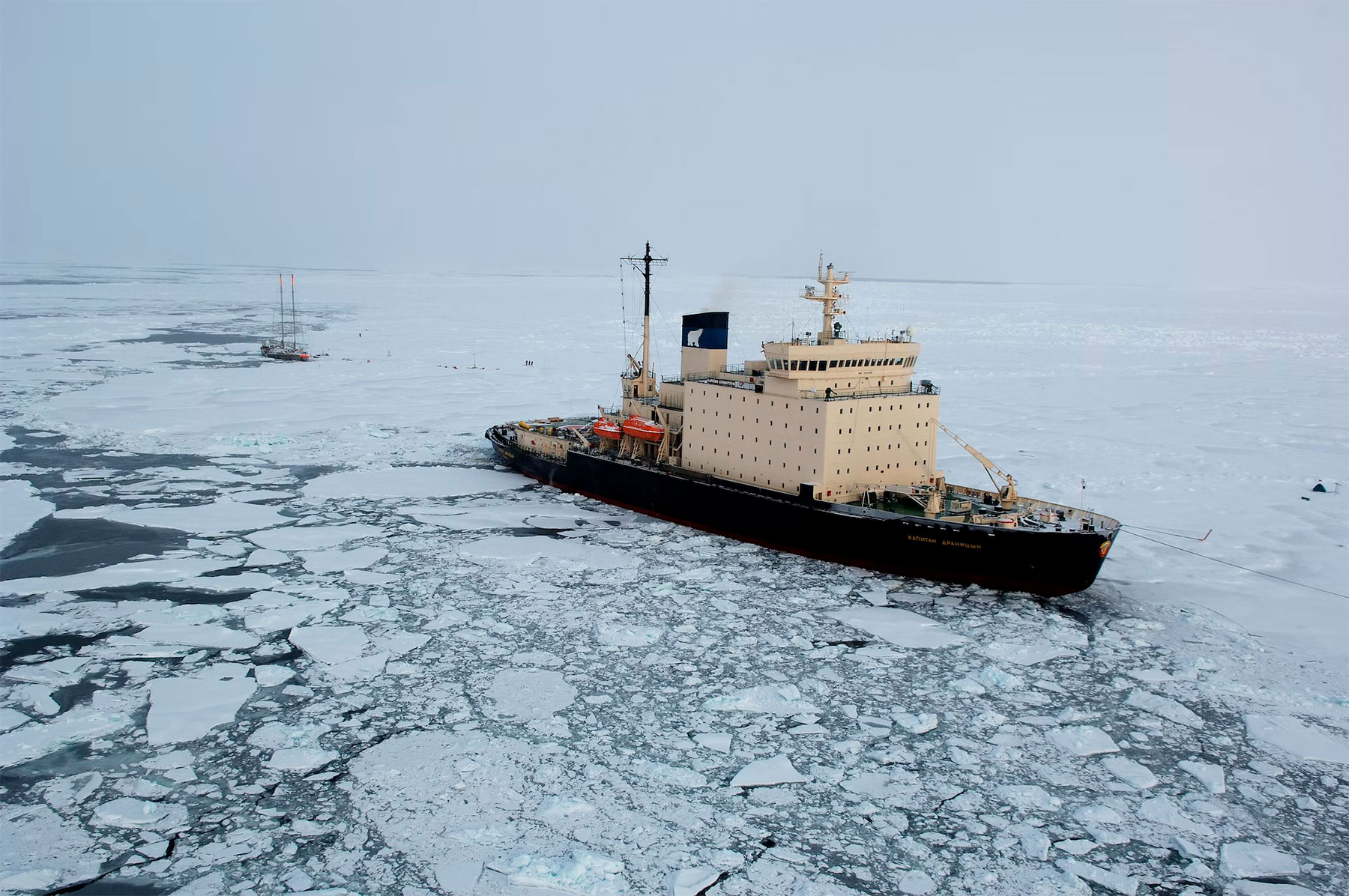The Arctic region witnessed significant amount of cooperation even between the traditional superpowers in the past. The region post Ukraine crisis has significantly moved towards great militarization. Suspension of every form of cooperation with Russia, and Finland’s joining of the alliance has further escalated of securitization in the North. The real existential challenges of climate change, human security and socio-economic context have taken backseat and the active geopolitics and traditional power rivalry has dominantly re-emerged in the region. Continuous western provocations for Ukraine’s bid for NATO (despite continuous warnings by President Putin since 2007’s Munich Security Conference to stops NATO’s expansion) and Russia’s reaction to it via military means, has taken the securitization to new highs in region. Further, Finland’s accession, Sweden’s in line, the ongoing discussions to open NATO’s Japan office and NATO’s close cooperation with South Korea are some of the future dangerous signs that would be read in terms of not only expansionist, but also encirclement strategies of the west. Western aims to isolate Russia by expanding NATO and other economic measures, has already catalyzed Russia engagements with China and other Asian states in search of trade, new partnerships and multilateral alliances. Though, strong western discourses that paints Russia as a threat dominates majority of the current global order, there still are others that are critical regarding the core assumptions on which these anti-Russian discourses are based. In the post-cold war world order, with no other existing security alliances or frameworks other than NATO, what the world really needs to question is the very fundamental requirement and existence of “NATO” itself. The questions of “who’s security” and “from what” needs critical reassessments as the thrust of the threat perception to ‘one’s own’ national security from the ‘other/others’, function almost equal for both East and West.
On 4 April 2023, Finland formally became the 31st country of the NATO security alliance. Western scholars argue that Finland’s joining has further strengthened the Western collective alliance that would enable a greater security framework in the North. A critical assessment of this Finland’s decision argues the opposite. This paper attempts to highlight various strategic calculations that have been altered or would alter in due course, with Finland’s accession to NATO.
Neutral status of Finland
Since the Second World War, Finland maintained a status of non-aligned state in the region. Till recently it has remained a significant buffer between NATO and Russia. This status has drastically changed post Russia’s military action in Ukraine. Western media and its strong Russophobic discourses have become successful in making the people of Finland and its political elite actually believe that they are under some sort of threat of Russian invasion in the region. Whereas, by creating and further perceiving this notion of a hypothetical threat from Russia, the West has itself succeeded in its own larger geopolitical agenda in the region. NATO’s overall rising budget as a result of its existing member’s inability to meet their annual financial obligations to the alliance, has been continuously straining US economy. The evidences of these were clearly visible during Trump’s administration when he called for pulling out of the alliance if member states failed to meet their annual financial obligations to NATO. To mitigate this impact the other obvious choice for West has been to increase and expand the alliance’s membership. Finland’s accession (and next Sweden in line) are some of the concrete western approaches in this direction that have attained their success. It has been estimated that a NATO member spends an annual amount of around EUR 70–100 million, for its membership and acceding to the alliance’s political organs and its command structure. Finland, in addition to this has to pay a significant cost for accession to the NATO Defence Planning Process, meeting the capability targets allocated to Finland and participating in NATO’s operational planning. Finland under NATO’s membership would be committed to spending at least 2 per cent of its gross domestic product (GDP) on defence expenditure annually. For the year 2023, Finland’s defence expenditure would be around 2.38 per cent of its GDP. This is expected to come to around 2 per cent for the years 2024 and 2025 and the country aims to mainly focus on financing its strategic Naval and Air Force projects. Geopolitically, this whole decision of Finland has completely changed its position of military neutrality in the region and the state has already started thinking militarily on similar lines to NATO’s strategic planning and security outlook.
Finland-Russia Border
Finland and Russia maintain 1,340 km of land border. One may argue that till recently this was not even a border but an open frontier, at some of the places between the two states. Both Finland and Russia maintained mutual respect for each other’s boundaries and there existed a significant level of cooperation and trust between the two. Finland joining of NATO has resulted in the addition of 1340 km of direct land between Russia and NATO. In the coming years, both states are bound to further see a depreciation in their existing trust and bilateral border cooperation. This has even become visible in the terms of Finland’s new approach towards its border management. Finland, under the perceived notion of military threat/invasion from Russia, has started constructing the border fence along the Russian-Finish border. Russia–Finland border that has remained peaceful since World War II is on rapid verge of increased militarization and greater securitization.
Rising Militarization Curve
Finland joining of NATO has drastically altered the strategic calculations in the North. This has challenged Russia’s strategic deterrent calculus by reducing the geographical proximity between NATO’s military component and Russia. Building of NATO military bases and deployment of any kind of strategic weapons in Finland (especially along the Finish-Russian border) would significantly challenge the strategic threat perception of Russia. Owning to the close geographical proximity of Russia’s important cities such as St. Petersburg and its strategic bases such as the Kola Peninsula from Finland, Russia would be bound to develop equally effective and credible counter capabilities for any adverse scenarios. Further, Finland’s acquisition of 64 F-35 from US by 2026 for their deployment in Rovaniemi to enhance NATO’s Quick Reaction Alert (QRA) would reduce Russia’s reaction time of its fighters taking off from Kola Peninsula and other strategic bases.

Image Source: https://www.idsa.in/system/files/issuebrief/nato-land-border-with-russia.jpg
As per recent estimates, Finland is presently equipped with around 650 tanks (that include 200 German-made Leopards types 2A6 and 2A4), around 700 howitzers and cannons, 700 mortars and about 100 heavy and light rocket launchers. Its inventory further includes 650 anti-aircraft missiles (also in the process to buy more from Swedish Saab Dynamics and Rafael Advanced Defense Systems), surveillance radars with a range of almost 500 km (300 miles), an undisclosed number of unarmed Orbiter drones (also in process of purchasing 1,000-2,000 more, including hundreds of Parrot Anafi USA drones) and Israeli-made ELTA counter-battery radar systems. Finland is also in the final stages of tendering new high-altitude anti-aircraft systems from Israel. Finish military is in the process of enhancing winter warfighting gears, night vision systems and gas masks, remote-controlled smart mines and area denial systems.
Finland’s naval component consists of four command vessels, five minelayers, eight missile craft, three mine countermeasure vessels, 13 mine sweepers, and a small landing craft. It is in the process of acquiring three new multi-role corvettes for surface combat that are expected to enter service by 2029. Finland annually trains around 21000 conscripts that adds to the country’s wartime reserve of 280,000 soldiers. About 870,000 Finish people between the age of 17 and 60 are liable for service in case of emergency.
All this had though significantly added to NATO and Finland’s increased military capabilities, but it would simultaneously trigger Russia’s reciprocatory response in the entire North in due course. To counter balance NATO through numerical and strategic military strength, Russia would be bound to increase its military infrastructure and re-configure strategic planning in the region. Russian development to this regard has already started and these would increase on the basis of security deployments of NATO in the due course.
This militarization would not only remain restricted to a particular region or area, but owning to Russia’s geopolitical and strategic capabilities in the Arctic, the region as a whole would witness increased in military buildups. The scale and intensity of NATO’s joint exercises in Finland post its accession to the alliance, would further aggravate insecurities in the region. Western arguments that justifies Finland’s joining of the NATO as a strengthening factor to the alliance’s strategic positioning in the Arctic, lacks rationality regarding the geopolitical instability that this decision could bring in the region in due course. Even a small strategic miscalculation by either side could result in military standoffs or direct confrontations. Such a scenario could not only escalate East–West tensions in the Arctic, but could complicate the overall security complex of the Nordic region.
Suspended Arctic Cooperation and straining relations
Since Russia’s military action in Ukraine, every form of cooperation with Russia in the Arctic remains suspended. Seven out of the eight Arctic states in the Arctic Council have called off every form of cooperation with Russia even on non-military matters. Norway, which has taken over as the new role of council’s chairmanship from Russia, has outlined its priorities for its chairmanship term but without giving any reference to Russia. Russia’s senior Arctic officials are still hopeful for revival of some level of work in the Arctic council, but are simultaneously of the view that the level of trust that earlier existed in the council has been lost. Speaking via video speech to the during the transfer of chairship to Norway, Russian Minister of Foreign Affairs, Sergey Lavrov, said,
“Further effective work and the future of the Arctic Council as a whole will depend on whether we can jointly find opportunities for continuing a civilized dialogue to preserve the Arctic as a territory of peace, stability and constructive cooperation.”
It is important to understand that the Arctic Council functioned on the fundamental principles of the Ottawa declaration and decisions within the council were taken on a consensus basis. Traditional security and military component was kept deliberately out of the scope of the Arctic Council. With Finland joining NATO and Sweden next in line for its membership, one may argue that geopolitics has already taken over the Arctic Council. Under such a new framework how overall cooperation in the council resumes is a debatable question. Norway’s recent expulsion of Russia’s 14 diplomats by accusing them of spying charges and Russia’s retaliatory measure against Norway’s 10 diplomats, further complicate any chances of cooperation between the two even at bilateral levels.
Conclusion
The Arctic region witnessed significant amount of cooperation even between the traditional superpowers in the past. The region post Ukraine crisis has significantly moved towards great militarization. Suspension of every form of cooperation with Russia, and Finland’s joining of the alliance has further escalated of securitization in the North. The real existential challenges of climate change, human security and socio-economic context have taken backseat and the active geopolitics and traditional power rivalry has dominantly re-emerged in the region. Continuous western provocations for Ukraine’s bid for NATO (despite continuous warnings by President Putin since 2007’s Munich Security Conference to stops NATO’s expansion) and Russia’s reaction to it via military means, has taken the securitization to new highs in region. Further, Finland’s accession, Sweden’s in line, the ongoing discussions to open NATO’s Japan office and NATO’s close cooperation with South Korea are some of the future dangerous signs that would be read in terms of not only expansionist, but also encirclement strategies of the west. Western aims to isolate Russia by expanding NATO and other economic measures, has already catalyzed Russia engagements with China and other Asian states in search of trade, new partnerships and multilateral alliances. Though, strong western discourses that paints Russia as a threat dominates majority of the current global order, there still are others that are critical regarding the core assumptions on which these anti-Russian discourses are based. In the post-cold war world order, with no other existing security alliances or frameworks other than NATO, what the world really needs to question is the very fundamental requirement and existence of “NATO” itself. The questions of “who’s security” and “from what” needs critical reassessments as the thrust of the threat perception to ‘one’s own’ national security from the ‘other/others’, function almost equal for both East and West.
Disclaimer: Views expressed are of the author and do not necessarily reflect the views of the Manohar Parrikar IDSA or of the Government of India.








